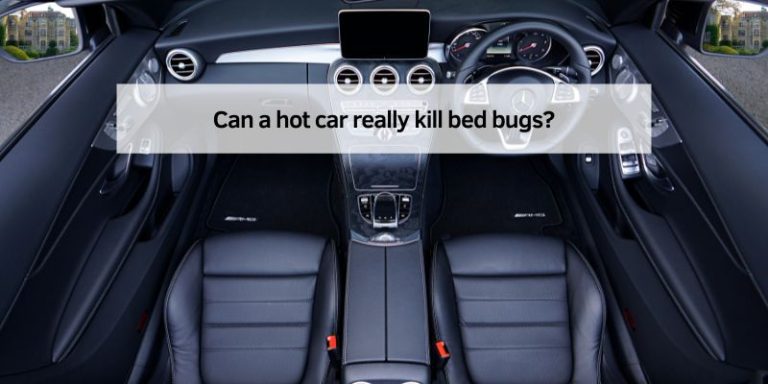Why are Car Prices So High? Uncover the Truth!
Car prices are high due to increased demand and supply chain disruptions. Rising material costs and inflation also contribute significantly.
The automotive market has faced unprecedented challenges in recent years. A surge in demand for vehicles, coupled with ongoing supply chain issues, has pushed prices to new heights. Factors like the pandemic have disrupted production, creating shortages of key components like microchips.
As a result, dealerships struggle to maintain inventory, driving up costs. Consumer preferences for larger vehicles, such as SUVs and trucks, further amplify the demand, leading to higher price tags. Understanding these dynamics is essential for potential buyers navigating today’s market. This blog explores the reasons behind skyrocketing car prices and offers insights for those considering a vehicle purchase.
The Surge In Car Prices
The auto industry is facing a remarkable surge in car prices. Many factors contribute to this increase. A major reason is the global chip shortage. This shortage limits car production, creating high demand. Prices rise as buyers compete for fewer cars.
Another factor is the increase in raw materials costs. Steel and aluminum prices have soared. This affects the overall cost of manufacturing cars.
Compared to past decades, the situation is different. In the 1980s, cars were more affordable. Now, buyers often pay a premium for new models. The trend shows higher prices may continue in the future.
Supply Chain Disruptions
Global events have caused major supply chain disruptions. These disruptions affect many industries, especially automobiles. The COVID-19 pandemic impacted production timelines and resources.
One significant issue is the microchip shortage. Microchips are crucial for modern vehicles. Many manufacturers cannot make enough cars without these chips. This shortage raises the cost of production.
Production halts lead to fewer cars available for purchase. With less supply, prices naturally increase. Buyers face higher costs and fewer options in the market.
Demand Outstripping Supply
Consumer buying patterns have changed significantly. Many people now want to own a car. With limited supply, this increases demand. Buyers are competing for fewer vehicles.
The pandemic has greatly influenced demand. People avoided public transport during lockdowns. This led to a rush for personal vehicles. As a result, prices began to rise sharply.
Many also prefer newer models with advanced technology. These features attract buyers, driving prices higher. The shortage of microchips affects production. Fewer cars are available, making them more expensive.
Raw Material Price Volatility
The cost of steel and aluminum is rising quickly. These materials are crucial for making cars. Manufacturers face higher costs, which they pass on to buyers.
Rare earth elements are also important in car production. They are used in batteries and electric motors. The prices of these elements can change a lot.
This affects the overall car prices. As material costs rise, car manufacturers must charge more. Buyers feel this impact when shopping for new vehicles.
Labor Market Challenges
The labor market faces many challenges. Workforce shortages are a big problem. Many companies struggle to find enough skilled workers. This leads to higher production costs.
As a result, car manufacturers must increase prices to cover these costs. Increasing wages also affect car prices. Companies raise wages to attract workers. This adds more expenses to car production.
Increased wages mean higher prices for consumers. The cycle of rising costs continues. Understanding these factors helps explain why car prices are so high.
Technological Advancements
The cost of innovation plays a big role in high car prices. New technologies require massive investments. Car manufacturers spend a lot to develop safer and smarter vehicles.
Electric vehicles (EVs) are gaining popularity. They need special parts and batteries, which can be expensive. This drives up the overall price of cars.
| Factor | Impact on Price |
|---|---|
| Research and Development | High costs increase vehicle prices. |
| Battery Technology | Expensive batteries raise EV prices. |
| Safety Features | Advanced safety tech adds to costs. |
Market Dynamics
Car prices are high due to various market dynamics. One key factor is dealer markup strategies. Dealers often add a premium to the manufacturer’s suggested retail price. This markup can vary widely, depending on demand and vehicle availability.
Another factor is manufacturer pricing policies. Manufacturers set prices based on production costs and market demand. Limited supply of popular models can lead to higher prices. This creates a competitive environment where buyers are willing to pay more.
Understanding these factors helps buyers navigate the automotive market more effectively.
Governmental Policies And Regulations
Emission standards force car makers to use expensive technology. This increases the cost of production. Meeting these regulations can raise car prices significantly.
Compliance costs affect manufacturers. They must invest in new equipment and training. This can lead to higher prices for consumers.
Tariffs on imported vehicles also impact pricing. These taxes raise costs for buyers. Trade agreements can either help or hurt prices based on their terms.
Cars built in countries with high tariffs can be more expensive. This situation limits choices for consumers and keeps prices high.
Consumer Choices And Preferences
Many buyers now prefer luxury features in their vehicles. This trend raises car prices significantly. Features like advanced technology and premium materials attract consumers.
The SUV and truck phenomenon also impacts pricing. These vehicles are popular and often more expensive. Consumers seek space, safety, and performance in their choices.
Higher demand for large vehicles leads to increased prices. Many families prefer SUVs for their versatility. Trucks are also favored for their towing capacity and off-road capabilities.
The Future Of Car Pricing
The future of car pricing looks uncertain. Experts predict prices may stay high due to several factors. Supply chain issues are still a concern. Demand for new cars remains strong as well.
Many buyers are feeling the pinch. Used cars are also seeing increased prices. This situation pushes buyers to consider more affordable options.
Strategies for savvy buyers include researching market trends. Knowing the right time to buy can save money. Negotiating with dealers can also lead to better deals. Consider financing options that fit your budget.
| Strategy | Description |
|---|---|
| Research | Understand market trends and pricing fluctuations. |
| Timing | Purchase during off-peak seasons for better prices. |
| Negotiation | Always negotiate to get a better deal. |
| Financing | Explore financing options that suit your needs. |
Frequently Asked Questions
Why Are Car Prices Rising In 2023?
Car prices are rising due to several factors. Increased demand, supply chain disruptions, and semiconductor shortages are significant contributors. Additionally, inflation and higher production costs are pushing prices up. Buyers are facing limited inventory, leading to increased competition and higher prices.
What Factors Influence Car Pricing?
Several factors influence car pricing. These include market demand, production costs, and economic conditions. Supply chain issues, such as semiconductor shortages, also play a role. Seasonal trends and consumer preferences further impact pricing. Understanding these factors helps buyers make informed decisions.
Are Used Car Prices Also High?
Yes, used car prices are also high. The pandemic led to a surge in demand for used vehicles. Limited new car inventory has pushed more buyers toward the used market. Consequently, this increased demand has elevated prices significantly. Buyers should research thoroughly before purchasing.
How Does Inflation Affect Car Prices?
Inflation directly impacts car prices by increasing production costs. Higher costs for materials and labor lead manufacturers to raise prices. Additionally, inflation affects consumer purchasing power, influencing demand. As a result, car prices tend to rise in an inflationary environment.
Understanding this can help buyers plan their purchases.
Conclusion
Car prices remain high due to various factors. Supply chain issues, increased demand, and production costs all play a role. Economic conditions and inflation further contribute to rising prices. Understanding these elements helps consumers navigate the market. Awareness is key to making informed purchasing decisions in this challenging automotive landscape.






